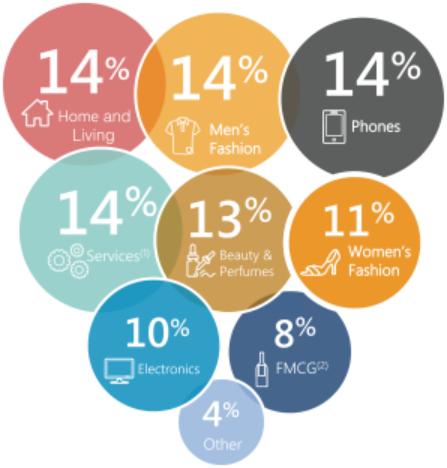actions. In some countries, when the economic environment has deteriorated and in order to compensate for the resulting revenue shortages, authorities have imposed new regulations, in particular relating to tax and customs duties, sometimes unexpectedly. There is no guarantee that legislative authorities in the countries in which we currently operate will not pass new laws or regulations or amend existing laws and regulations in a manner that would significantly negatively impact our business model or may even render our business model no longer viable.
The weakness of the legal systems in the emerging countries in which we currently operate could have a material adverse effect on our business, financial condition, results of operations and prospects.
We do business in certain countries where corruption is considered to be widespread, and we are exposed to the risk of extortion and violation of anti-corruption laws and regulations.
Anti-corruption laws and regulations in force in many countries generally prohibit companies from making direct or indirect payments to civil servants, public officials or members of governments for the purpose of entering into or maintaining business relationships. In addition, we are subject to certain provisions of the U.S. Foreign Corrupt Practices Act of 1977 (“FCPA”). The FCPA prohibits providing, offering, promising, or authorizing, directly or indirectly, anything of value to government officials, political parties, or political candidates for the purposes of obtaining or retaining business or securing any improper business advantage. We conduct business in, or may expand our business to, certain countries where there is a high risk of corruption and extortion and in some cases, where corruption and extortion are considered to be widespread and where our companies may have to obtain approvals, licenses, permits, or other regulatory approvals from public officials.
Therefore, we are exposed to the risk that our employees, consultants, agents, or other third parties working on our behalf, could make, offer, promise or authorize payments or other benefits in violation of anti-corruption laws and regulations, especially in response to demands or attempts at extortion. We have implemented prevention and training programs as well as internal policies and procedures designed to promote best practices and detect and prevent such violations. However, these prevention and training measures may prove to be insufficient, and our employees, consultants and agents may have been or could be engaged in activities for which we or the relevant officers could be held liable. We can make no assurance that the policies and procedures, even if enhanced, will be followed at all times or effectively detect and prevent all violations of the applicable laws and every instance of fraud, bribery and corruption.
In addition, some anti-corruption laws and regulations, including the FCPA, require that we maintain accurate books and records that reflect the disposition of company assets in reasonable detail, and that we implement appropriate internal controls, to ensure that our operations of do not involve corruption, illegal payments or extortion. The great diversity and complexity of these local laws and regulations and the decentralized nature of our business in various countries and markets create a risk that, in some instances, we may be deemed liable for violations of applicable laws and regulations, in particular, in connection with a failure to comply with those laws and regulations relating to books and records, financial reporting, or internal controls, among others.
Any actual or perceived violation or breach of these anti-corruption laws and regulations, including any potential governmental or internal investigations of perceived or actual misconduct, could affect our overall reputation and, depending on the case, expose us to administrative or judicial proceedings, which could result in criminal and civil judgments, including fines and monetary penalties, a possible prohibition on maintaining business relationships with suppliers or consumers in certain countries, and other negative consequences which could have a material adverse effect on our business, financial condition, results of operations and prospects.
We may face exposure under certain export controls and trade and economic sanctions laws and regulations that could impair our ability to compete in international markets and subject us to liability for non-compliance.
Our business activities may expose us to various trade and economic sanctions laws and regulations, including, without limitation, OFAC’s trade and economic sanctions programs (“Trade Controls”). In such circumstances, such Trade Controls may prohibit or restrict our ability to, directly or indirectly, conduct activities or dealings in or with certain countries that are the subject of comprehensive embargoes (i.e., sanctioned countries), as well as with individuals



